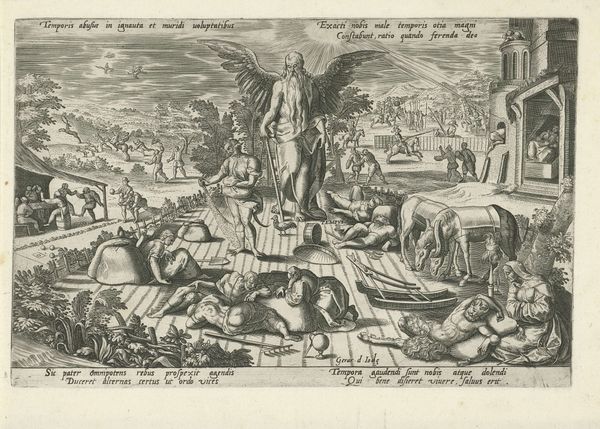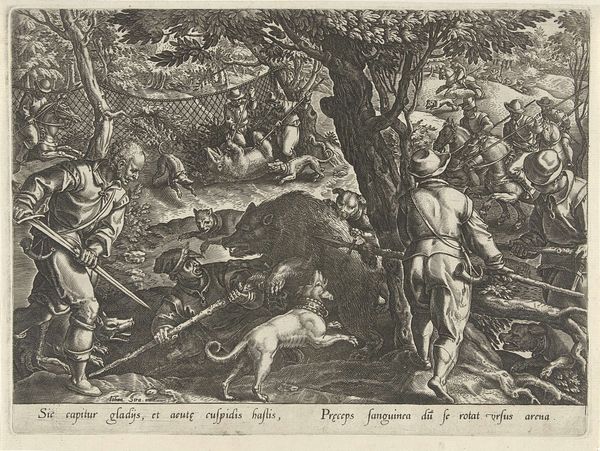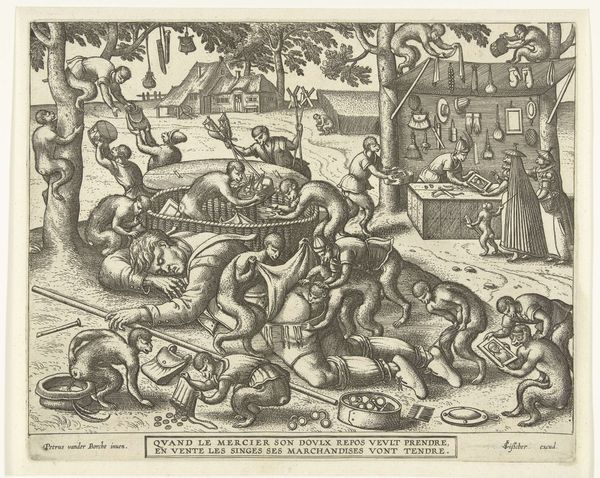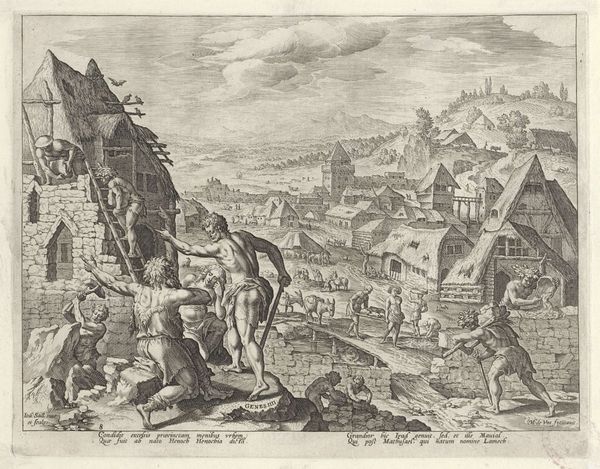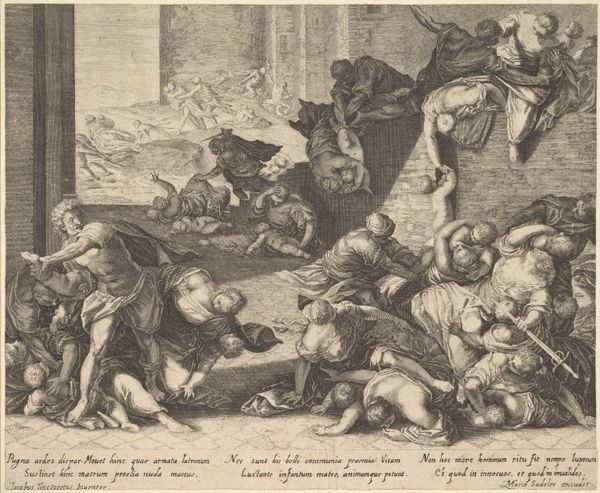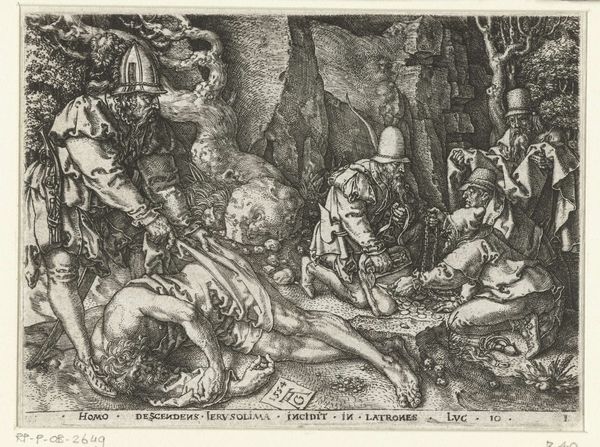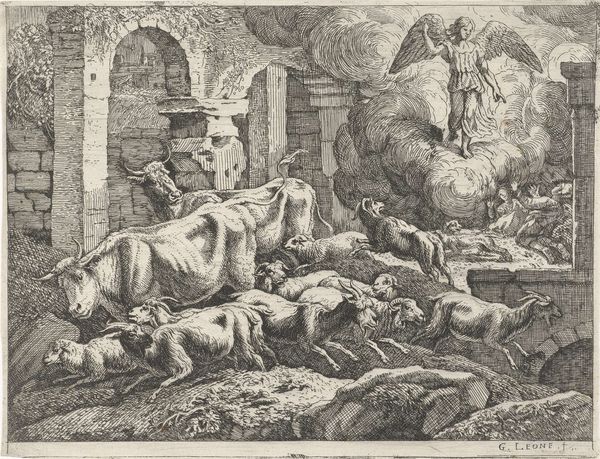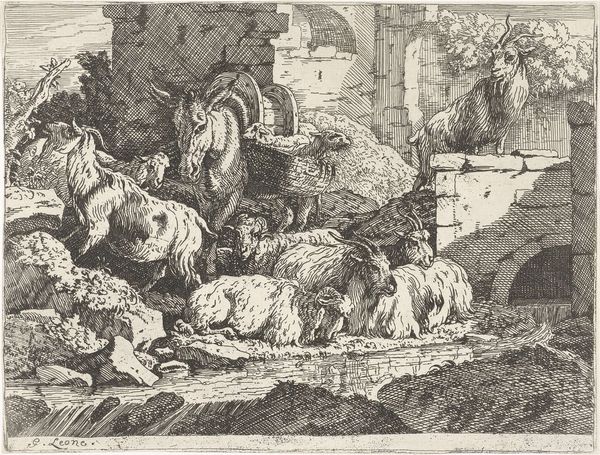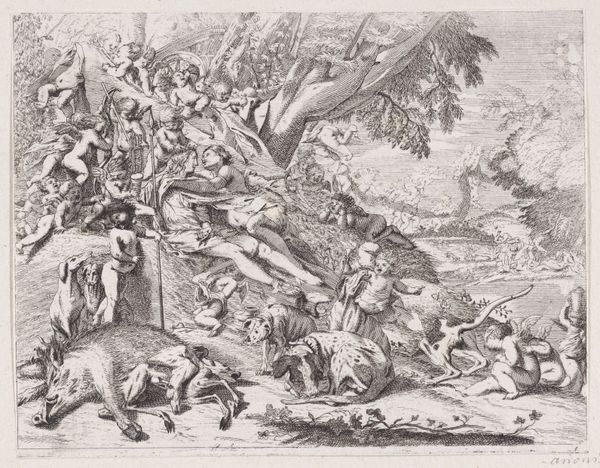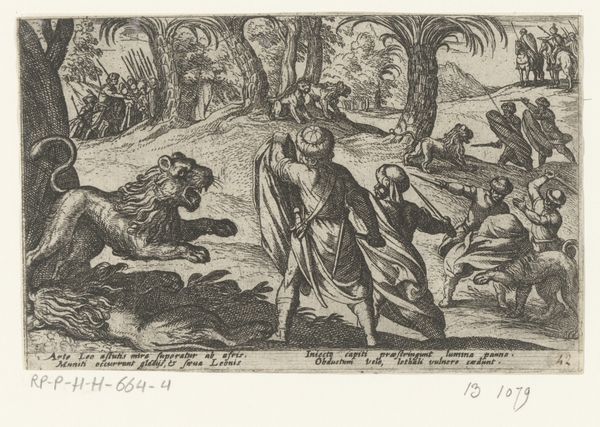
print, engraving
# print
#
landscape
#
figuration
#
11_renaissance
#
history-painting
#
northern-renaissance
#
engraving
Dimensions: width 294 mm, height 216 mm
Copyright: Rijks Museum: Open Domain
Curator: Here we have "The Hunt for Chamois", an engraving by Philips Galle from 1578, now residing in the Rijksmuseum. Editor: My initial reaction is of a bustling landscape; it feels almost dizzying, the eye bounces around trying to take it all in. It’s chaotic, almost performative in its display of movement and action. Curator: Yes, there's certainly a lot happening! Galle, coming from a tradition of Northern Renaissance printmaking, crams the composition with details of the hunt. We see the chamois scaling precarious cliffs, hunters closing in from all angles, even a settlement nestled in the valley below. It reflects a worldview emphasizing human dominance over nature. Editor: Absolutely. And the visual language reinforces that. The chamois, despite being the supposed subject, are small and almost secondary to the activity of the hunters. The bodies of the hunters are active and dominate much of the scene. It makes me think about power dynamics, who gets to be the protagonist in any given story. And in whose interests the tale is spun. Curator: That's a compelling reading. Contextually, it's worth noting the historical prevalence of hunting as an activity closely tied to the aristocracy. Prints like this would circulate amongst those circles, reinforcing their perceived authority and celebrating their dominion. This engraving wasn’t just documentation; it was propaganda of sorts. Editor: It also makes you consider the labor that would go into planning such an operation and then processing of such a quantity of animals! Beyond the image itself, who is benefiting from the outcome? It reads as an unsustainable use of natural resources. How much are we romanticizing? What are the costs? Curator: That’s certainly something Galle’s audience might not have considered. The visual culture often glosses over those exploitative dimensions in favor of celebrating an idealized pursuit. Editor: Examining "The Hunt for Chamois" encourages us to question such presentations of our relationship with nature and how these depictions reflect existing power imbalances. Curator: It's a work of art, no pun intended, offering a snapshot of its historical and social context, even if that view isn’t always a flattering one.
Comments
No comments
Be the first to comment and join the conversation on the ultimate creative platform.
